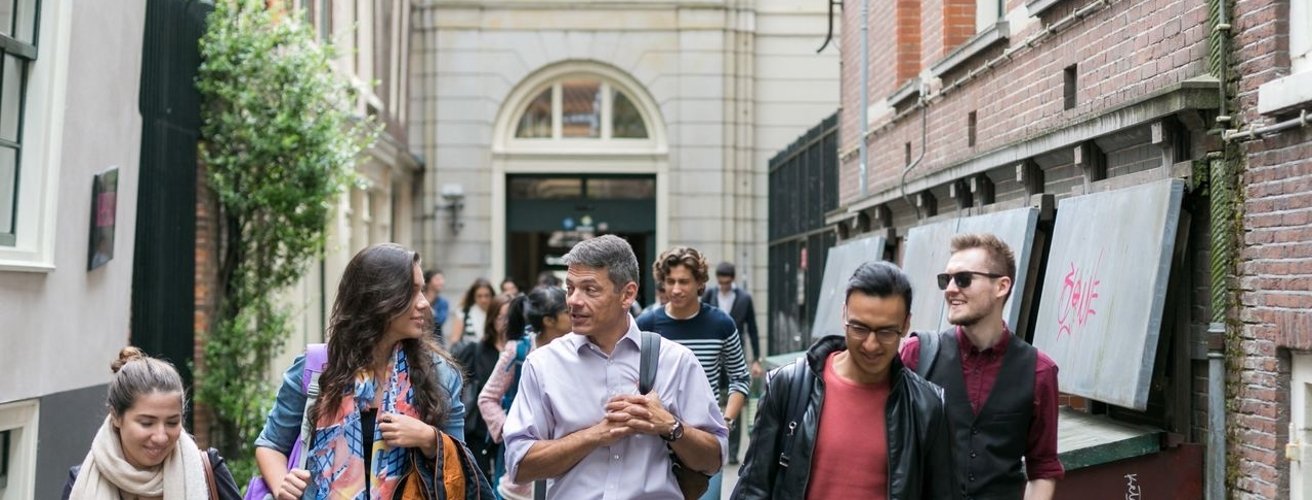PhD candidate in experimental atomic physics
PhD candidate in experimental atomic physics
You cannot apply for this job anymore (deadline was 1 Jun 2018).
Browse the current job offers or choose an item in the top navigation above.
Job description
We, the Institute of Physics, are looking for a highly-motivated student with excellent laboratory skills for performing state-of-the-art atomic physics experiments.
The hybrid atom-ion quantum systems lab, headed by Dr Rene Gerritsma, is part of the Quantum Gases and Quantum Information (QGQI) cluster at the University of Amsterdam. The main focus of the group is to study the quantum dynamics in trapped ions while at the same time developing technology for emerging quantum applications, such as quantum computing and simulation.
More information on our research can be found on the webpage Hybrid atom-ion Quantum Systems.
In the project you will develop a new quantum simulation platform: trapped ions that are pinned by optical microtraps. Simulating quantum systems on classical computers is extremely hard, as the resources required scale exponentially with system size. This limitation prevents physicists from testing whether microscopic model Hamiltonians of solid-state physics such as the Fermi-Hubbard model correctly predict emergent phenomena in many-body quantum systems (e.g., magnetic phases and phase transitions, superconductivity). Richard Feynman proposed to solve this problem by having well-controlled laboratory quantum systems simulate quantum problems of interest. Such quantum simulators would be the quantum analogue of a wide range of simulators of complex classical physics, ranging from crash test dummies to numerical weather-prediction software. Over the years, a number of laboratory quantum systems have been put to the test as a platform for quantum simulation. Trapped ions are among the most reliable of these systems and several groups have shown impressive progress in trapped ion quantum simulation.
You will answer two questions:
- Can we scale up the trapped ion further by using two-dimensional ion crystals?
- Can we use optical microtraps to tune the soundwave spectrum in the crystal and use these to simulate quantum magnets?
Since spin-spin interactions between ions are mediated via sound waves, they are very long ranged, as there is no screening of charge in the ion crystal. However, many models that are of interest to quantum simulate require shorter-ranged interaction. In the project, we will pin particular ions in the crystal with optical microtraps to modify the soundwave spectrum such that short range spin-spin interactions become available. These can be used to quantum simulate models of frustrated spin systems that are particularly hard to simulate on classical computers.
Relevant references:
- R. Nath, M. Dalmonte, A. W. Glaetzle, P. Zoller, F. Schmidt-Kaler and R. Gerritsma, New J. Phys. 17, 065018 (2015).
- Zhang, G. Pagano, P. W. Hess, A. Kyprianidis, P. Becker, H. B. Kaplan, A. V. Gorshkov, Z.-X. Gong, and C. Monroe, Nature 551, 601 (2017).
Specifications
- max. 38 hours per week
- €2222—€2840 per month
- Amsterdam View on Google Maps
Requirements
You hold a MSc. in (theoretical) physics or physical chemistry and are requested to motivate why you apply for the position and to supply a C.V.
Other skills/experiences/documents that would benefit your application are:
- previous laboratory experience in an atomic physics lab;
- working knowledge of a programming language (phyton, C++ or equivalent);
- excellent English oral and written communication skills;
- scientific publications
To foster diversity in our research group, we will especially appreciate applications from excellent female candidates.
Conditions of employment
The appointment will be on a temporary basis for a period of 4 years (initial appointment will be for a period of 18 months and after satisfactory evaluation it can be extended for a total duration of 4 years) and should lead to a dissertation (PhD thesis). An educational plan will be drafted that includes attendance of courses and (international) meetings. You are also expected to assist in teaching of undergraduates.
Based on a full-time appointment (38 hours per week) the gross monthly salary will range from €2,222 in the first year to €2,840 in the last year. The Collective Labour Agreement for Dutch Universities (Cao) is applicable. Favourable tax agreements may apply to non-Dutch applicants.
Employer
University of Amsterdam
With over 5,000 employees, 30,000 students and a budget of more than 600 million euros, the University of Amsterdam (UvA) is an intellectual hub within the Netherlands. Teaching and research at the UvA are conducted within seven faculties: Humanities, Social and Behavioural Sciences, Economics and Business, Law, Science, Medicine and Dentistry. Housed on four city campuses in or near the heart of Amsterdam, where disciplines come together and interact, the faculties have close links with thousands of researchers and hundreds of institutions at home and abroad.
The UvA’s students and employees are independent thinkers, competent rebels who dare to question dogmas and aren’t satisfied with easy answers and standard solutions. To work at the UvA is to work in an independent, creative, innovative and international climate characterised by an open atmosphere and a genuine engagement with the city of Amsterdam and society.
Department
Institute of Physics
Physics research and physics education at the Institute of Physics covers a wide range of topics, both experimental and theoretical.
The Institute of Physics has three research divisions:
Specifications
- PhD
- Natural sciences
- max. 38 hours per week
- €2222—€2840 per month
- University graduate
- 18-156
:fill(white)/logos/uva-en-wide.png)
